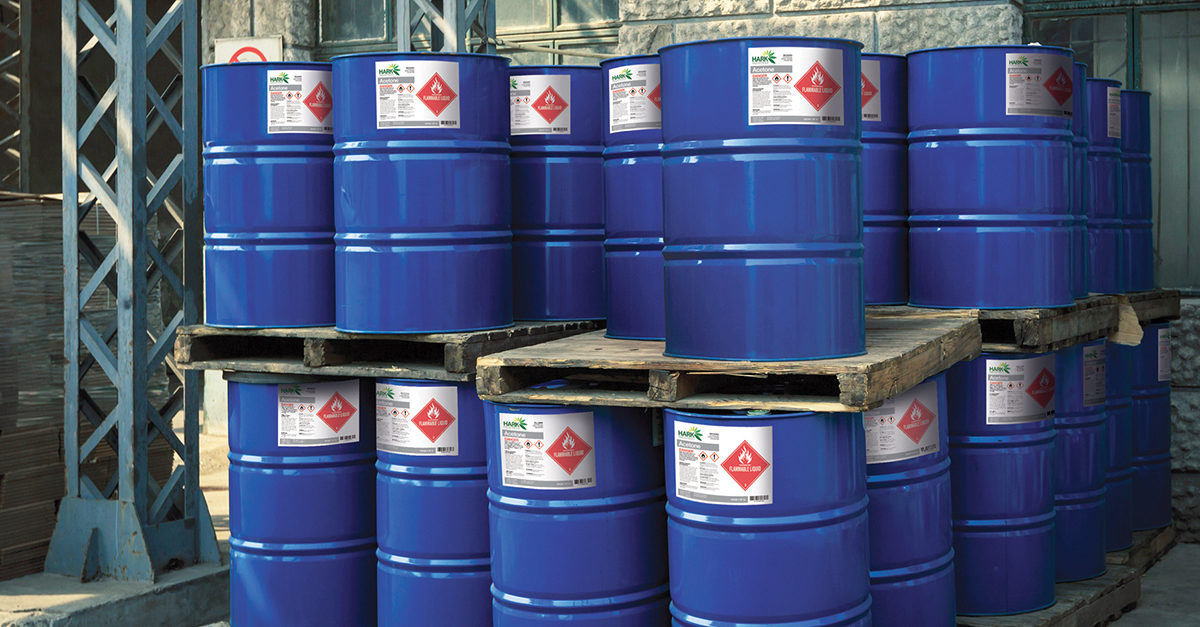Companies that have not implemented a proper labeling system for the chemicals in their facilities may risk costly penalties.
More than 21 percent of companies have yet to meet the June 2016 requirements set forth by the U.S. Department of Labor’s Occupational Safety and Health Administration (OSHA), according to a survey by Occupational Health & Safety magazine and Avery Products Corp., an industrial and consumer label provider. With higher OSHA penalties making noncompliance more costly, attaining compliance is more important than ever.
Christine Webb, CSP, a business consultant and former osha compliance officer, says last year Congress enacted a bill that allowed federal agencies to raise their fines, which have not been updated in decades. This could greatly impact organizations that are not yet compliant with OSHA’s Globally Harmonized System (GHS) of Classification and Labeling of Chemicals.
“OSHA increased its fines by 78 percent, so a more severe citation that could cost up to US$7,000 previously can now cost [more than] $12,000,” Webb says. “Not having appropriate GHS labels on secondary containers is one of the easiest compliance issues to spot and cite.”
For those who need some assistance in making sure their chemical containers are compliant, consider the following information.
GHS Label Content
In an industrial setting, chemical formulations that could require GHS labeling include industrial primers, coatings, sealants, lubricants, greases, cutting oils, rust removers, acids, alkalines, solvent-based cleaners, degreasers, surfactants, disinfectants, and sanitizers. That’s a long list.
According to the survey, more than 26 percent of respondents said finding and placing compliant GHS content onto the label has been the most challenging part of the labeling process for them. Too often this has involved tracking down difficult-to-obtain updated safety data sheets, determining the key data, and printing it on the GHS label in the correct format, which requires GHS pictograms.
“A lot of people still don’t fully understand GHS labeling requirements, particularly at the small- to mid-sized company level,” Webb says. “They are unsure of what goes onto a GHS label and how to get it.”
Here’s a tip: Some companies offer free GHS label software online that allows users to print labels from a desktop. The label data can be accessed from online databases and formatted to GHS requirements. Much of the necessary information can be obtained by simply entering a substance’s Chemical Abstracts Service (CAS) number. osha’s website also offers free resources, such as downloadable infographics with pictogram and hazard breakdowns.
Each GHS label requires six specific data items:
- Product name or identifier
- Hazard statement
- Signal word
- GHS pictogram symbols
- Precautionary statement
- Supplier information.
GHS Label Durability
Finding durable labels that can withstand chemicals and harsh environments can also be a challenge. Some people mistakenly try to use regular office-grade labels for GHS applications, but find the labels peel or the ink fades in tough workplace settings. The labels must be able to resist oil, grease, and solvents in addition to hold up to harsh cleansers and disinfectants.
For extra protection in harsh environments, use an additional laminate over GHS labels. Consider a laminate that is ultraviolet- and water-resistant, and also one that resists scuffing, tearing, and smudging, making it ideal for use in warehouses, storage areas, and worksites.
GHS Label Size
GHS compliance is required for chemical formulations purchased in bulk containers for cost savings, such as barrels of industrial cleaner that are transferred to spray bottles or other smaller “down-packed” containers for portable use. Containers requiring GHS -compliant labeling can vary in size from 55-gallon drums to little test vials.
Such GHS labels are available in a full range of sizes to fit drums, totes, pails, cans, jugs, containers, and even small bottles. They can be applied to a variety of surfaces, such as metal, plastic, glass, ceramic, polycarbonate, and more.
Don’t Delay
“Even if you are an end user at a small- or mid-sized company, compliance is easier than you think,” Webb says. “You can become compliant quickly, avoid higher osha penalties, and keep your employees and workplace safe and productive.”


